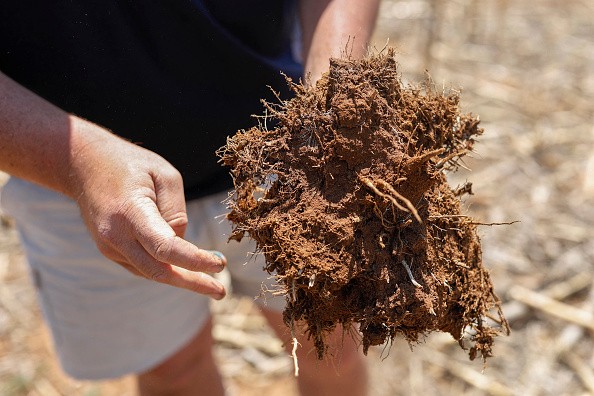Oregon's Humongous fungus spans over 3 square miles. It's very big and nasty, possessing long, black tendrils that usually sucks the life out of trees.

Earth's Largest Living Organism
There's a 3 1/2-square mile specimen in eastern Oregon that weighs 35,000 tons and could possibly be the biggest living thing on Earth, according to researchers at the University of Utah. It caused $1.5 million worth of damage to Georgia's peach trees in only two years.
Armillaria ostoyae - the scientific name of the fungus - infects and kills 600 different species of woody plants and it is very difficult to kill this fungus, according to Deseret News.
Dr. Debora Lyn Porter, the primary author of the study and a PhD student in the university's mechanical engineering school, stated that once the fungus gets started, it is extremely hard to root it out. Farmer's tendrils are being cut down, yet they keep returning.
It is hoped that the findings of the Utah study, published in the most recent issue of the Journal of Mechanical Behavior of Biomedical Materials, would bring some comfort to farmers and forestry authorities.
Mechanics of Humongous Fungus
The research focused on the rhizomorphs, tendrils, and their biomechanical structure.
The tendrils of rhizomorphs are protected from chemicals and mechanical pressures by an exterior melanized coating. Steven Naleway, the mechanical engineering assistant professor who conducted the study, stated that the outer layer is quite robust.
According to Naleway, the layer is like a hard plastic. It's quite durable. According to nature, it's a lot stronger than you'd expect.
In the 1980s, scientists in Bloomington, Minnesota, researched a fungus that was almost as large as the Mall of America in Michigan. Insects' tendrils coat the bark of the tree, preventing it from absorbing water and nutrients.
According to Porter, one of the most fascinating aspects of this study was its focus on the fungus's mechanics and possible methods of combating it.
Also Read : The Potential of Mycology or Fungi Megascience in Advancing Our Knowledge and Technology
Importance of the Study
"If we could understand how it is better controlled, it would be a huge, huge help for agricultural industries where they are such a huge blight." Porter said.
In woods, the fungus may be seen as part of the "cycle of life," but in agriculture, it is not.
A farmer may lose a whole vineyard, Porter warned. If the plants aren't tough enough, She continued, then they'll die.
That's what makes it so hard to kill, she added, taking on the attributes of science fiction movies that can't be penetrated.
According to this new study, farmers and others may have a much-needed weapon in the fight against the fungus if the correct "biocontrols" are used. Chemical characteristics, like calcium, are crucial to its breakdown. One of its distant relatives can be found in Utah, although its effects are still being studied.
"There is a lot of future work that needs to be looked at," Porter said. "What is the strength of the shield? What is the shield made out of? What chemical protection does it offer?"
Related Article : Outbreak of Untreatable, Drug-Resistant Superbug Fungus Unnerves Experts in 2 US Cities
For more news, updates about fungi and similar topics don't forget to follow Nature World News!
© 2025 NatureWorldNews.com All rights reserved. Do not reproduce without permission.





